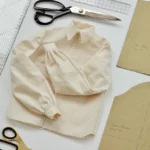Rug patterns are more than just decorative elements; they often carry rich cultural, historical, and symbolic meanings. Understanding these patterns can enhance your appreciation of rugs and help you choose one that resonates with your personal style and values. Here’s a guide to decoding common rug patterns and their significance.

Geometric Patterns
Characteristics:
Geometric patterns feature shapes like squares, triangles, diamonds, and circles. These patterns can range from simple to complex and are often repeated throughout the rug.
Significance:
- Order and Symmetry: Geometric designs often symbolize order and balance, reflecting a sense of structure and organization.
- Modern Appeal: These patterns are popular in contemporary decor for their clean lines and versatility. They can lend a modern and minimalistic feel to any space.
Floral Patterns
Characteristics:
Floral patterns incorporate motifs of flowers, leaves, and vines. These designs can be realistic or abstract and are often used to create a sense of elegance and beauty.
Significance:
- Nature and Growth: Floral patterns often represent nature, growth, and renewal. They bring a touch of natural beauty into the home.
- Cultural Symbolism: In many cultures, specific flowers carry symbolic meanings. For instance, peonies might represent prosperity and good fortune, while lotus flowers can symbolize purity and enlightenment.
Oriental Patterns
Characteristics:
Oriental rugs are known for their intricate patterns, including medallions, borders, and detailed motifs. These patterns often have historical and cultural significance.
Significance:
- Cultural Heritage: Oriental patterns, such as those found in Persian or Turkish rugs, often reflect the cultural and historical heritage of the region. They can tell stories about the people and their traditions.
- Spiritual Significance: Many Oriental designs have spiritual or religious meanings. For example, geometric patterns might symbolize the cosmos or spiritual balance.
Tribal Patterns
Characteristics:
Tribal patterns are characterized by bold, graphic designs often featuring symbols and motifs from indigenous cultures. These patterns are usually handwoven and reflect the artist’s cultural background.
Significance:
- Cultural Identity: Tribal patterns represent the unique cultural identity of various indigenous groups. They often incorporate traditional symbols and colors.
- Storytelling: These patterns can tell stories or convey messages about the tribe’s beliefs, history, and way of life.
Abstract Patterns
Characteristics:
Abstract patterns break away from traditional designs and focus on shapes, colors, and forms that are more free-form and less representational.
Significance:
- Artistic Expression: Abstract patterns allow for greater artistic freedom and personal expression. They can add a modern and creative touch to interior spaces.
- Versatility: Due to their non-representational nature, abstract patterns can easily blend with various decor styles and color schemes.
Traditional Patterns
Characteristics:
Traditional patterns often feature classic designs that have been passed down through generations. These patterns can include intricate borders, medallions, and repeating motifs.
Significance:
- Heritage and Tradition: Traditional patterns preserve the artistry and craftsmanship of past generations. They often embody historical significance and cultural pride.
- Timeless Appeal: These designs offer a timeless aesthetic that complements both classic and modern interiors.
Patchwork Patterns
Characteristics:
Patchwork rugs are made from pieces of various fabrics or materials sewn together. They feature a mix of patterns and colors arranged in a patchwork style.
Significance:
- Creativity and Reuse: Patchwork patterns showcase creativity and resourcefulness, often repurposing materials to create something new and unique.
- Eclectic Style: These rugs can add an eclectic and personalized touch to a space, reflecting a mix of influences and styles.
Conclusion
Rug patterns are more than just decorative elements; they carry deep meanings and reflect cultural, historical, and personal significance. From geometric designs symbolizing order and balance to tribal patterns representing cultural identity, each pattern tells a story. By understanding these patterns, you can make more informed choices about rugs that not only enhance your decor but also resonate with your values and aesthetic preferences.











